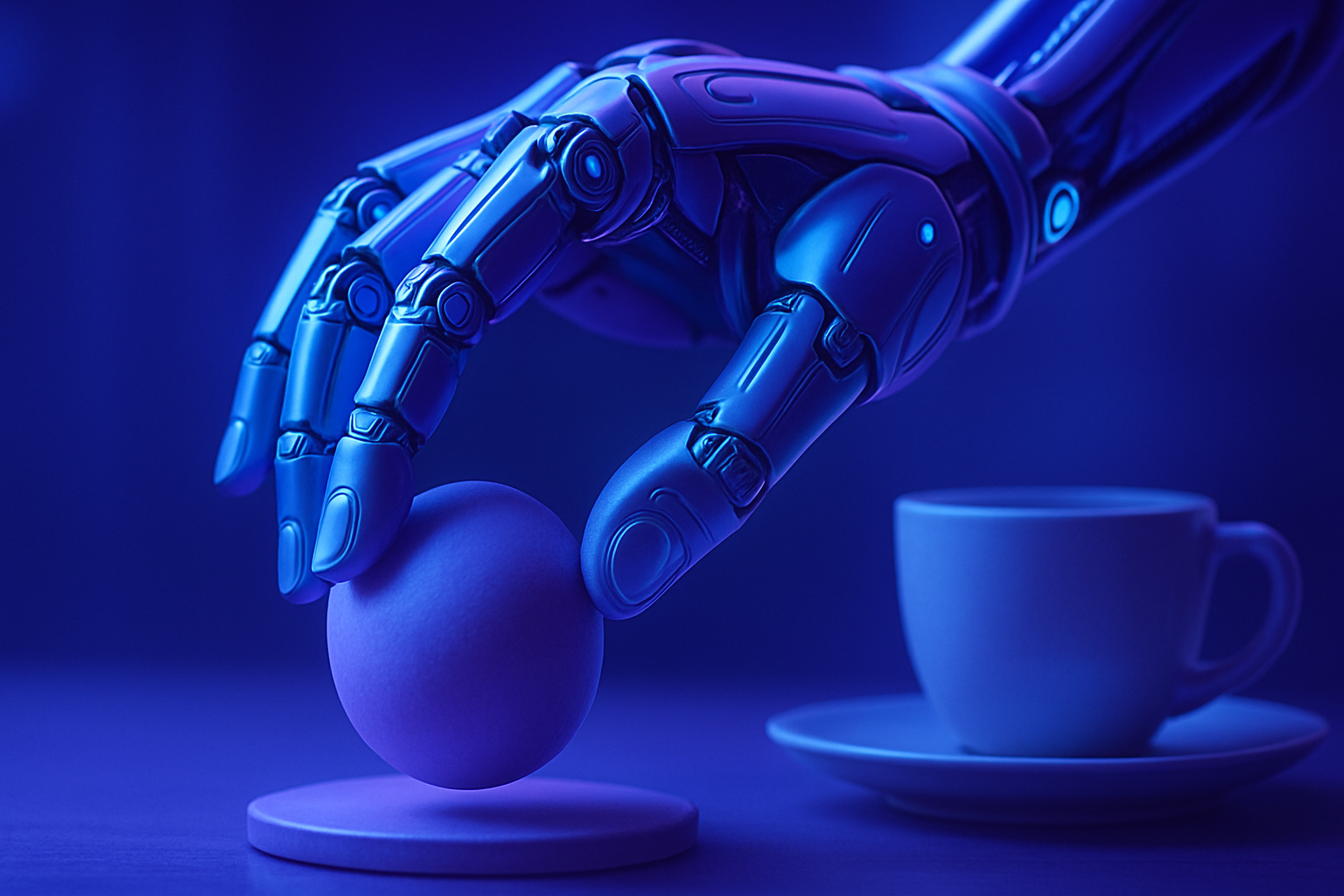The era of cutting-edge technology is manifested with the *F-TAC robotic hand*, which redefines the standards of tactile sensitivity. This innovative device integrates a tactile coverage reaching 70% of its surface, allowing for dexterity equivalent to that of humans. The challenges associated with reproducing human gestures dissipate thanks to its exceptional spatial resolution of 0.1 mm, offering unprecedented precision in interaction with the real world.
A major innovation in robotics
Researchers have recently unveiled an innovative robotic hand named F-TAC Hand, featuring remarkable tactile sensitivity covering 70% of its surface. This major advancement, published in Nature Machine Intelligence, revolutionizes the ability of robots to interact with dynamic environments.
Improvement in tactile feedback
Despite advances in the mimicry of human hand movements, robotic systems have yet to match human performance in unpredictable situations. The primary limitation lies in the lack of tactile feedback, which the F-TAC Hand overcomes with a spatial resolution of 0.1 mm for its tactile sensors. Professor Kaspar Althoefer, director of the Advanced Robotics Excellence Centre, emphasizes that this colossal resolution, combined with unprecedented spatial coverage, marks a turning point in the field.
Advanced perception algorithms
The advanced perception algorithms integrated into this hand significantly enhance the interpretation of interactions with the environment. This system allows for a better understanding of the grasped object as well as its essential parameters, thus optimizing manipulation capabilities.
An innovative design to overcome challenges
The design of the F-TAC Hand has been carefully crafted to overcome traditional challenges associated with integrating high-resolution tactile sensors. This system preserves the range of hand movements while providing remarkable robustness in real-world conditions. Tests conducted in over 600 real scenarios demonstrate that this robotic hand significantly outperforms non-tactile alternatives.
Applications and future implications
The results of this research offer fascinating prospects for the industry. The enhancement of object manipulation and complex tasks opens avenues in various fields including manufacturing, human-robot interaction, and assistive technologies. Professor Althoefer expresses his optimistic vision: optimized humanoid robots could become indispensable aids in daily tasks.
Origin of the research
The fundamental work that led to this advancement comes from Queen Mary University of London. Professor Althoefer shared that this study builds on previous research conducted by his former doctoral student, Wanlin Li. Together, they developed tactile sensors based on cameras, capable of measuring tactile information with high precision.
A promising future for robotics
This technological evolution marks a significant step towards bridging the gap between human and robotic dexterity. The F-TAC Hand represents immense potential for adaptability and nuance in robotic interactions with environments. With this new level of tactile sensitivity, the interaction of robots with their surroundings will be transformed in unprecedented ways.
To learn more about these fascinating innovations, explore recent work on memristors to overcome catastrophic forgetting in AI, or discover a new innovative framework that enables the correction of a robot’s actions.
Advancements like these in the field of robotics herald an era where robots will interact with humans in a more intelligent and intuitive manner.
Frequently asked questions
What are the main innovations brought by the F-TAC robotic hand?
The F-TAC robotic hand integrates high-resolution tactile sensors over 70% of its surface, providing exceptional sensitivity that allows for adaptive grips similar to those of humans.
How does the tactile sensitivity of the F-TAC Hand compare to that of human hands?
The F-TAC Hand achieves a spatial resolution of 0.1 mm, enabling it to detect subtle variations during interaction with objects, closely approaching human capabilities.
What types of tasks can the F-TAC robotic hand perform effectively?
It excels in complex manipulation tasks, particularly object handling, thanks to its ability to interpret crucial details of the grasped objects and adapt its grip accordingly.
What is the importance of integrating tactile sensors into a robotic system?
The integration of rich tactile sensors allows robots to better understand their environment and improve their interactions, which is essential for performing tasks in dynamic contexts.
How does the F-TAC Hand improve human-robot interaction?
These advancements facilitate more precise and intuitive manipulation, paving the way for more applications in fields such as manufacturing, assistance, and everyday interaction with humans.
What are the potential impacts of the F-TAC Hand on industrial applications?
The F-TAC Hand could transform the industry by enabling finer manipulation and better response to changing situations, thereby increasing efficiency and reducing errors.
How does this technology contribute to education and research in robotics?
It offers a foundation for advanced research on interactions between machines and humans, while training new generations of engineers capable of developing more sophisticated robotic systems.
What challenges remain to be overcome in the development of robotic hands similar to the F-TAC?
Challenges persist in the miniaturization of components, improving energy autonomy, and integrating artificial intelligence for even more natural interactions with the environment.






